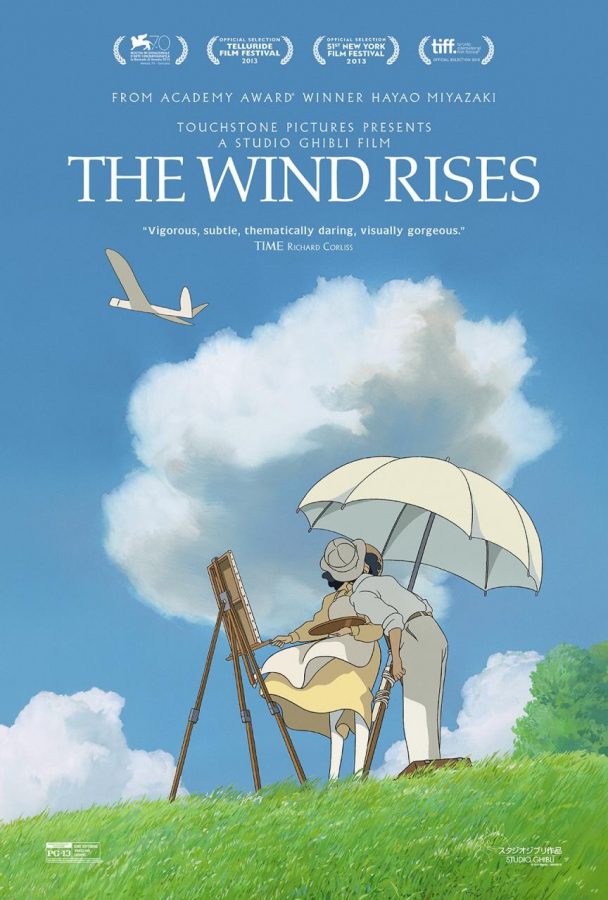Hayao Miyazaki’s career “ends” like it began
Another masterpiece out of Studio Ghibli, The Wind Rises, soared into theaters Friday, February 28th. With only three additional movie-goers in the theatre with me, I immediately became discouraged. Miyazaki could easily be considered the Walt Disney of Japan and his legacy has become timeless. With such instant classics as Spirited Away and My Neighbor Totoro, more people should be excited about new comings from Studio Ghibli. Even so, I braced myself for my first time experiencing the wonder of Studio Ghibli in theaters, rather than just the countless DVDs I own.
The story is one of love, loss, and airplanes. Protagonist Jiro Horikoshi (Joseph Gordon-Levitt) had a long time dream of being an airplane engineer, meeting Italian plane designer Giovanni Battista Caproni (Stanely Tucci) in their shared dreams. Unfortunately, World War II was on the brink and he knew his planes would be used for such. Nonetheless, he still wanted to make something beautiful and decidedly proceeded to aid the war effort. Along this, he met love interest Naoko Satomi (Emily Blunt), and their own story began.
As far as Miyazaki’s film career goes, I’d say this one is comparable to his start, with Grave of the Fireflies. Not quite as sad as that one, I still nearly shed a tear. Along the same lines, both movies feature the hardships of World War II on the Japanese people.
The plot, Jiro’s love and desire to build airplanes, easily drew viewers in. Utilizing the time period well, producers accurately included historical events, such as the Great Kanto Earthquake of 1923 and World War II, and historically accurate figures, Caproni and Nazi regime leader Adolf Hitler, to set the stage for coming events. The use of dramatic irony allowed viewers to feel sympathy for the characters, knowing ultimate failure for the Japanese during this period was inevitable.
Although the score wasn’t as striking as in past movies such as Howl’s Moving Castle, it did help with establishing the scenes. It was useful but not anything memorable.
Unfortunately, there was one issue that really resonated with me: the match of voice to mouth. There were points in the movie where I felt the characters’ mouths and their words were not synchronized, although I understand this will never be perfect in any dubbing situation. Certain lines felt, to me, like they were totally unscripted in the original Japanese version, and simply added to in the English dub to put words in a character’s mouth.
The movie has been well received from many of its critics. It was nominated for over 40 awards, winning 14 of them and tying for two (Boston Online Film Critics Association’s Best Animated Film with Frozen and Utah Film Critics Association’s Best Animated Feature with another Studio Ghibli film, From Up on Poppy Hill).
Although I did see some clear flaws in the movie (the inconsistent and unannounced time skips, the seemingly important plot points that never came up again, the forever stoned babies) and I don’t think it’ll go in the ranks of instant classic like so many of Miyazaki’s films, I do think it was a good watch for anyone, especially avid Studio Ghibli followers. The movie is rated PG-13, but I believe it’s fun for all ages.

